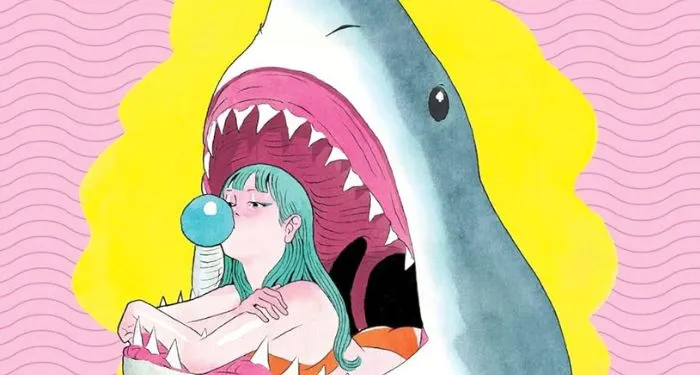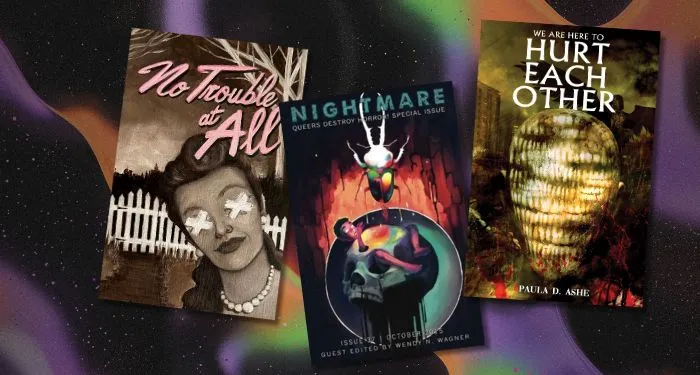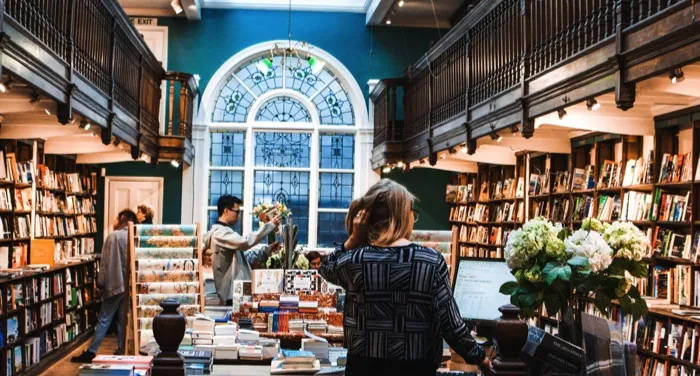In a 1966 interview, Marcel Duchamp remarked on the propensity of twentieth-century artists to pair up. He gave the examples of Picasso and Braque, Delaunay and Léger, and himself and Picabia—“although,” he added, “Picabia-Duchamp is a strange match. A sort of artistic pederasty. Between two people one arrives at a very stimulating exchange of ideas.”
We see here a hint of the old Dada mischief: Duchamp flashes that arresting simile (artistic what?) before deflecting into the banal, as if releasing an ostrich at an Elks Lodge dinner. He was referring to a few years of intense mutual absorption with the French-Cuban artist Francis Picabia beginning with their first encounters in Paris in 1910, although they remained friends for life. When they met, Duchamp had exhibited his paintings—uncertain forays into various current styles—only a handful of times. Eight years Duchamp’s senior, Picabia was already building his reputation for restless experimentation, having abandoned a staid but lucrative start as a neo-Impressionist landscape painter for a career Duchamp later characterized as “a kaleidoscopic series of art experiences.”
Their early exploits are the stuff of modernist legend. Notable works from this intimate phase of their friendship include Picabia’s immense, idiosyncratic Cubist canvases, including La Source (The Spring) from 1912, as well as Duchamp’s first readymades and his subversive 1912 painting, Nu descendant un escalier n° 2 (Nude Descending a Staircase, No. 2). Rejected from that year’s Salon des Indépendants for being too risqué to hang beside other Cubist work, even though Duchamp’s own brothers were on the hanging committee, Nude Descending went on to become the succès de scandale of the 1913 Armory Show in New York and launched Duchamp’s reputation as a provocateur. “The years between 1911 and 1914 were like an explosion for us,” Duchamp recalled. “We were rather like two poles, if you like, each of us adding something, and making an idea explode because of those two poles. If we’d been alone—he by himself and I by myself—perhaps fewer things would have happened for each one of us.”1
It makes sense that Duchamp would remember this formative relationship as a powerful dyad, but his metaphor is imprecise: their bond was in many respects tripolar. A third party often shared their adventures, their late-night dashes in Picabia’s sports cars, their debates about the meaning and practice of modern art: Picabia’s iconoclastic wife, Gabriële Buffet-Picabia. Her little-known story is recounted in Anne and Claire Berest’s fictionalized biography, Gabriële, published in France in 2017 and now translated into English by Tina Kover.
Trained as a pianist and composer, Gabriële Buffet knew enough about the visual arts to challenge and cajole some of the leading avant-garde creators of her day. As Jean Arp put it, she had the “ultra-French gifts [of] intellect, wit, sound judgment, understanding, finesse,” and was “more than a shadowy power behind the throne of the dadaists.” From her first meeting with Picabia in 1908, she seems to have urged him to tear free of every stylistic restraint. She was not a muse, exactly, but an art instigator, calling for revolutionary forms and technologies. Picabia is said to have called her “the woman with an erotic mind.” She went on to write invaluable memoirs and studies of Orphism, Dada, the birth of abstraction: eyewitness accounts of one cultural breakthrough after another. Duchamp fell deeply in love with her.
History is unkind, period. But it’s especially unkind to what Elizabeth Hardwick, in these pages, called “footnotes”: the wives, typically, and other women connected with the illustrious dead.
Some have been the inspiration for poems or have seen themselves expropriated for the transformations of fiction. They have written and received letters, been lied to, embezzled, abandoned, honored, or slandered. But there they are, entering history with them, with the celebrated artists, generals, prime ministers, presidents, tycoons.2
Naturally, footnotes themselves have sometimes wanted to correct or expand the record, or just redirect posterity’s attention for a moment, as Hardwick points out. Gabriële Buffet-Picabia was not that kind of footnote. Although the Berest sisters’ book joins the long-standing feminist project of reclaiming forgotten women of note, Buffet-Picabia herself tended to minimize her part in the art developments she chronicled. “The challenge we set for ourselves,” the Berests explain, “a daunting one, was to shine the spotlight on someone who preferred to remain in shadow.”
Much of Buffet-Picabia’s personal archive was lost in her old age, but the Berests have pieced together an engaging and largely plausible narrative. They use the term “true novel”—as Anne Berest did with her later fictionalized family memoir, The Postcard (2023)—to describe this hybrid form: the facts are accurate, they argue, but the authors have colored in the outlines. “Armed with our research,” they write in an afterword for the English-language edition, “we then allowed our work as novelists to take over, bringing this woman’s life to life.” This experimental, intuitive approach can also be seen in Anne Berest’s earlier book on Françoise Sagan, Sagan, Paris 1954 (2015), a blend of biography and autofiction.
Gabriële Buffet was born in Fontainebleau in 1881, the second and last child of Alphé-Gabriel Buffet, a cavalry officer, and Laurence Hugueteau de Challié, whom she witheringly described as “the literary-salon type.” Her maternal grandmother, Laure de Jussieu (from a renowned family of botanists), had written well-received conservative political essays before her marriage, and her aunt Alphonsine de Challié, “the eccentric in the family,” was a painter who had studied alongside Berthe Morisot at the studio of Charles Chaplin—one of the few ateliers to admit women. Despite these examples of female intrepidity so close to her, Buffet later scorned Alphonsine’s dewy Impressionist portraits, and took pleasure in reducing some of them to ash.
Given Alphé’s military career, the family moved often. The Berests suggest that this may account not only for Buffet’s love of travel but also for her disinterest in material possessions. She displayed “an almost obsessive determination to get rid of things, to give away and sell everything.” A cousin recalled her setting the table for a children’s lunch with ceramic cups hand-painted by Picasso, a gift from the artist; when a guest noticed, she said, “You want them? Take them,” and packed up the cups, “without even letting the children finish their snack!”
The family often spent summers and holidays at their rambling fifteenth-century ancestral manor in the village of Étival in the Jura, surrounded by mountains, lakes, and pastures. The countryside offered freedom hard for girls to find elsewhere. “I was one of the first people to ski,” Buffet told an interviewer.3 She also recalled her early sensitivity to music, and perhaps some degree of synesthesia. “From the age of five onwards,” the Berests write, “she’s able to ‘see’ notes and rhythms, which give her intense physical pleasure.” She asked for a piano and received one. It’s possible that her mother, described as musical in family memoirs, was her first teacher.
At seventeen, Buffet decided to become a composer and trained for le concours, the entrance exam for the Paris Conservatoire. Only a handful of female students had been admitted by then. Buffet was not chosen, but the rejection allowed her to find a better fit, the Schola Cantorum in the Latin Quarter, with its growing reputation among the avant-garde. After sitting in on Gabriel Fauré’s composition classes, she took her exams and was accepted in late 1898—the only woman admitted that year. If she had failed, she would likely have been nudged toward marriage by her parents.
In one of their occasional asides, the Berest sisters discuss how normal—in some ways progressive—Buffet’s family seems for the period, as opposed to her later characterization of them. In the 1970s, Buffet told an interviewer, “I myself was born a revolutionary, into one of the strictest families that you could imagine, with values of the old nobility.” Any constraint was likely to feel heavy to Buffet, who prided herself on ditching her provincial upbringing as she rocketed into the twentieth century. From that bourgeois childhood, though, she carried away a certain confidence and social credit. She knew her own worth.
At the Schola Cantorum, Buffet developed her personal ethos in an atmosphere of intense hard work combined with artistic permissiveness. Claude Debussy, a popular campus visitor, often repeated to students “the aphorism that will mark a whole generation of young artists: ‘Les regles ne créent pas une oeuvre d’art’—Rules do not create art.” Buffet admired Debussy’s Nocturnes (1892–1899), which he had described as “an experiment in the different combinations that can be achieved with one color—what a study in gray would be in painting.” She may have heard this work when all three movements were first performed together in Paris in 1901.
Debussy’s Nocturnes were inspired in part by James McNeill Whistler’s series of moody evening and night scenes by the same name, mostly dating from the 1870s. Whistler himself felt drawn to the abstractions of music, using titles based on musical vocabulary (“nocturne,” “symphony,” “variation”) to emphasize formal qualities over faithful imitation of nature. This kind of cross-fertilization between art forms felt radical for Buffet and her peers but dated back to the Romantics.4 One branch of the idea culminated in Richard Wagner’s mid-century concept of Gesamtkunstwerk—a total work of art synthesizing music, poetry, visual art, and stagecraft—but the dream of convergence was still fresh in Aesthetic circles in the 1870s, when Walter Pater formulated his famous dictum that “all art constantly aspires to the condition of music.”
In 1906, when Buffet graduated, she contrived once again to escape “the typical young woman’s fate.” Vincent d’Indy, cofounder of the Schola Cantorum, arranged for her to live in Berlin with a host family and take masterclasses with Ferruccio Busoni. When her parents refused to fund the trip, Buffet plotted in secret to earn the money by giving piano lessons. She arrived in Berlin later that year with just fifty marks and quickly found work in the house orchestra of a bar-restaurant.
Busoni, best known in his day as a virtuoso pianist, has recently been described in The New York Times as “the first truly modern composer.” He urged his students (among them Stefan Wolpe and Kurt Weill) “to explore abstract sonorities, to aspire to unlimited tonal freedom, broaching possibilities never before imagined, including electroacoustic and microtonal music,” the Berests write. Although Buffet usually held herself apart from her classmates, fellow student Edgard Varèse gravitated to her experimental spirit and pursued her friendship. They spent hours together poring over music theory and discussing Busoni’s manifesto, which she translated from the German. Once, Buffet stayed up all night to try to help Varèse complete his symphonic poem, Bourgogne. “We wanted to free ourselves,” she later wrote in an unpublished text on Varèse, “to break away from every traditional technique, all the old syntax and grammar, to explore what we called pure music.”
Varèse went on to become the father of electronic music, while Buffet, on holiday in September 1908 at her family home in Versailles, met one of her brother’s painter friends over dinner and, in a matter of days, surrendered everything she had fought for: her independence, her music studies, her job with the orchestra, her dream of composing. She seems to have not even returned to Berlin to collect her belongings. None of her compositions survive. The Berests report that she burned them.
Anne and Claire Berest grew up learning next to nothing about Gabriële Buffet and Francis Picabia, their great-grandparents. The Berests’ mother, Lélia Picabia, had never spoken of her father, Vicente, the Picabias’ youngest child, who died of an apparent drug overdose when Lélia was four, or of his artistic parents. Lélia’s own mother, Myriam, had also kept an impressive silence about her past, like many Holocaust survivors.
In the novel, where they don’t always differentiate which of them is speaking, Anne or Claire writes, “I can pinpoint almost the exact day I really became aware of being Picabia’s great-granddaughter. It was at the private showing before the big exhibition of his work at the Musée d’Art Moderne. I must have been about twenty. Maman had unexpectedly invited us to go with her. Remember?” Her sister does, but what struck her was their position as outsiders among the chic Parisian strangers at the private viewing. The girls were his family, but did not belong. As a teenager, Anne had dared to look up Francis Picabia in a Petit Robert dictionary: “I felt like I was doing something forbidden.”
It was Anne, too, who came upon the familiar name of Gabriële Buffet-Picabia by chance while reading a biography of Marcel Duchamp. Enticing Claire, also a novelist, into the mystery of their great-grandmother, Anne began to probe
the silence surrounding her. We had a sense that this woman, unknown and unremembered, had been an extraordinary individual. Unknown to us. Unremembered in the history of art. Why this double disappearance?
Discovering, over years of research, that your great-grandparents were at the forefront of international modernism—central figures in the development of abstraction, Dada, anti-art, experimental film, and machinist idioms—must feel like the classic dream of stumbling on new rooms in one’s own house. But while the rest of us find a dented birdcage in our dream room or face an implacable ghost, the Berest sisters learned, for example, that their great-grandmother slept with Igor Stravinsky. More significantly, they learned that in her sixties Buffet-Picabia was a trusted courier in the Resistance cell to which Samuel Beckett was eventually recruited. Matronly and inconspicuous, she smuggled documents and people past unsuspecting Nazi occupiers. She saved lives, including those of Jean Arp and Myriam Picabia, the Berests’ Jewish grandmother. Sadly, they chose not to tell this remarkable story in Gabriële, but it appears in The Postcard. Some elements of Gabriële’s story that feel speculative turn out to be factual, so it is a shame that the endnotes in the French edition—with their hundreds of scrupulous attributions—have been cut from this version. The bibliography remains.
Buffet claimed that she had “heard a great deal about Picabia before I ever met him…and I despised that sort of bourgeois type, you know, with the rich grandfather,” overlooking her own solidly bourgeois background. When they were introduced, she denied knowing about Picabia’s recent one-person show in Berlin. She pretended to have no interest in painting—or in further inflating the ego of a rising star.
What could they offer each other? Near-constant surprises. That first night, Buffet hitched a ride to Paris with Picabia and her brother and ended up helping push Picabia’s car to a mechanic’s shop in the dark. Their life together was fast, messy, unpredictable. When he expressed frustration with his current work, she challenged him to stop copying what he saw around him. “And suddenly, at that moment, a deep understanding emerged between us,” she recalled in a radio interview. “A general sense of agreement, not just about art, but society too.” They married in January 1909 and honeymooned in Saint-Tropez, where Picabia—elated with his brainy bride—turned out a dozen paintings in a few days.
In today’s parlance, Picabia was a walking red flag. Born in Paris in 1879 to an aristocratic Cuban-born Spaniard and a wealthy Frenchwoman, he was a child prodigy who grew up lonely amid riches. His mother died of tuberculosis when he was seven. Francis trained his hand—or so he told interviewers—by forging his grandfather’s art collection, painting by painting, and selling the originals. He studied at the École des Arts Décoratifs; Georges Braque and Marie Laurencin were among his classmates.
Although he soon made a living from his first body of work, he also came into a large inheritance after the death of his maternal grandmother.5 This set him apart from his struggling contemporaries. Immediately, he bought a car—the first of almost 130 cars he would own, many of them, in those early days, custom-built for him at the factory, to his interior and exterior specifications. He bought one to celebrate meeting Buffet, and another to mark their honeymoon. “I’d love to paint like I drive an automobile,” Picabia wrote, “at 130 km/hr without running over anyone—in Paris, of course!”
This ravenous appetite—for speed, ideas, experiences—extended to women as well. He ended a ten-year relationship to marry Buffet, but was not, and never would be, sexually faithful for long. In an interview, Anne Berest described him as “inépuisable”—inexhaustible—but he was exhaustible, sometimes disappearing into opium dens for days or just crashing, unable to paint, perhaps summoning his wife by telegram. Typically, wherever he was, she hurried to join him.
Before their first child was born, Buffet-Picabia spent her days like a researcher, gathering art history and theory to share with Picabia, the better “to help her husband go through the mental processes that will enable him to change the way he paints.” With her help, he advanced his musicalist aesthetic, developing an expressive curving line that belied static reality. The Berests imagine her saying, “Francis, that’s it—you must paint sounds!” Buffet-Picabia’s own recollections in her book Aires abstraites (1957) are suitably more abstract:
We were convinced of the arbitrariness and falsity of our poor creation, the world. And yet, in our striving for a new gestation, we were none the less compelled to seek a new arbitrary principle, which we had to manufacture out of the whole cloth, with no other tools but trust—to chance or intuition.
Picabia’s now famous painting Caoutchouc (circa 1909) shows the freedom he felt to leave only a slender tether to representation. Cubism was one direction, and then, with his friend Duchamp (and the Futurists), a shared obsession with machines, reimagining industrial diagrams in works that Picabia dubbed “mechanomorphs.” Buffet-Picabia remembered dazzling her husband and the three Duchamp brothers by volunteering to go up in an airplane with the aviator Henri Farman after Marcel—for whom Picabia had arranged the adventure—and the other men quailed. She recalled the “infernal” engine noise and the bumpy landing a few minutes later. For days after their return to Paris, she said, “there were passionate discussions that culminated in the enthronement of the machine, that creation of men, in the highest echelons of art.”
During World War I Picabia launched a Dada journal, 391 (in homage to Alfred Stieglitz’s gallery 291 and its short-lived eponymous magazine), to which Buffet-Picabia also contributed. Her memoirs came later, often as contributions to friends’ art catalogs.
Despite the couple’s intellectual égalité, there was never any question of who would make lunch. Domestic duties, including four children in quick succession, arrived like a balloon payment due at the end of her unfettered student years. Neither of them wanted to be parents. Picabia’s affairs grew longer and more serious, and he finally left Buffet-Picabia for a younger woman, Germaine Everling, in 1919, although they did not divorce until 1930. The conversation between them continued until Francis’s death in 1953. Buffet-Picabia lived to 104, dying in 1985. The Berests edited Picabia’s Lettres & Poemes à Gabriële in 2023, a small, illustrated volume that includes a telling photograph cropped to show the handsome couple in Seville soon after their marriage (see illustration at top of article, which also includes one of Picabia’s cousins at left).6 Picabia poses confidently, a man about town. Buffet-Picabia is almost hidden behind him.
The artist David Salle, whose use of layers and transparency has often drawn comparison to Picabia, has said that his
attraction to Picabia is as a kindred spirit, not specifically as a stylist. When I first saw paintings of his from the 30s and 40s, I felt that I had no “direction” as to how to look at them…. I found this attitude liberating and exciting, free from good intentions—real anarchy!
The phrase captures both Picabia’s aims and his inner nature. For ten years, Buffet-Picabia was goddess of that unruly hearth.
Along with the agony and ecstasy of creating—no one in this novel ever plods through a routine morning in the studio—the Berests keep returning to two central puzzles: Buffet-Picabia’s artistic self-effacement and her coldness as a mother, a grandmother, a great-grandmother. Did her ferocious love for Picabia leave nothing for their children? She thought so herself, near the end of her life. Some of the most poignant passages in this unusual book are conversations between the sisters that touch on the generational trauma set in motion by Buffet-Picabia’s callous parenting: her darker legacy. They mention abusive incidents on her part—“things that speak of an abnormality”—but give no details. Most shocking is the Picabias’ indifference. “In all their voluminous correspondence,” they point out, “there’s hardly a line concerning their four children.”
Buffet-Picabia did have contact with some of her grandchildren. One cousin the Berests meet through their research is glad to recall tales of “Mémé.” “It’s a strange feeling to find out, as an adult, that we could have had a ‘mémé’—who had no interest in meeting us.” In writing Gabriële, they give their mother back her grandmother, but unearth a complicated phantom.



















 English (US) ·
English (US) ·